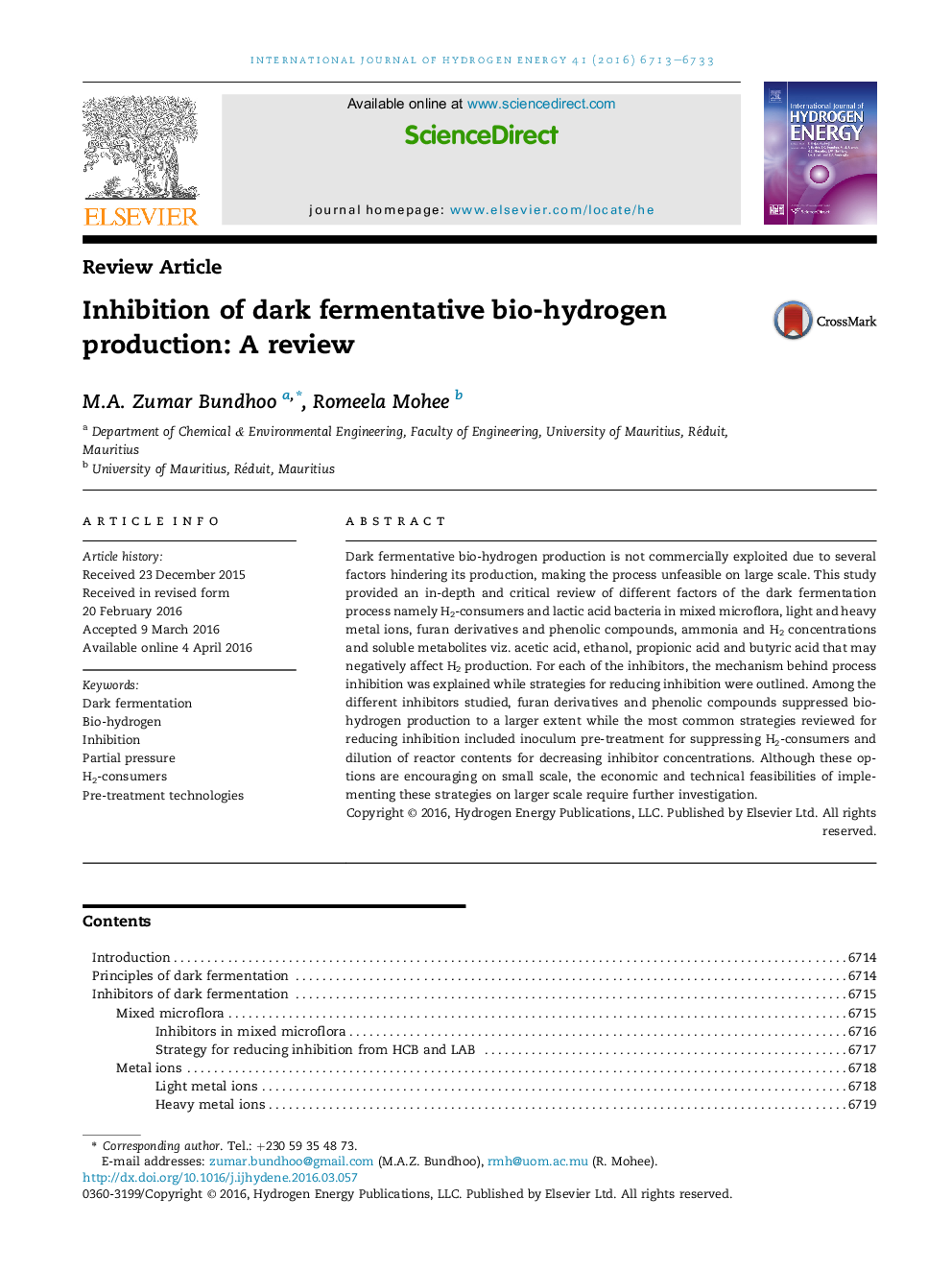| Article ID | Journal | Published Year | Pages | File Type |
|---|---|---|---|---|
| 1270677 | International Journal of Hydrogen Energy | 2016 | 21 Pages |
•Inhibitors are present in inoculum or substrates or produced during fermentation.•Furan derivatives and phenolic compounds are most suppressing on H2 production.•Pre-treatment of inoculum is not always effective for suppressing H2-consumers.•Diluting reactor contents to reduce inhibitor levels is unfeasible on large scale.•Economic and technical aspects to reduce inhibition must be studied on large scale.
Dark fermentative bio-hydrogen production is not commercially exploited due to several factors hindering its production, making the process unfeasible on large scale. This study provided an in-depth and critical review of different factors of the dark fermentation process namely H2-consumers and lactic acid bacteria in mixed microflora, light and heavy metal ions, furan derivatives and phenolic compounds, ammonia and H2 concentrations and soluble metabolites viz. acetic acid, ethanol, propionic acid and butyric acid that may negatively affect H2 production. For each of the inhibitors, the mechanism behind process inhibition was explained while strategies for reducing inhibition were outlined. Among the different inhibitors studied, furan derivatives and phenolic compounds suppressed bio-hydrogen production to a larger extent while the most common strategies reviewed for reducing inhibition included inoculum pre-treatment for suppressing H2-consumers and dilution of reactor contents for decreasing inhibitor concentrations. Although these options are encouraging on small scale, the economic and technical feasibilities of implementing these strategies on larger scale require further investigation.
